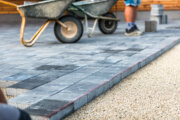As the COVID-19 pandemic has closed gyms, sports leagues and other exercise venues nationwide, more people have looked to work out at home — which is great news for personal exercise equipment manufacturers. Home exercisers have also searched for tools to help with their recovery and tend to sore muscles, boosting sales of therapeutic massage guns like the Theragun.
With the full return to gyms and rec leagues still likely months away — and many home gyms now up and running for potentially even longer — is a massage gun a good investment?
[See: Different Types of Pain, Explained.]
How Massage Guns Work
Joshua J. Bruner, a physical therapist who is board-certified in orthopedic physical therapy with the Orthopedic Institute at Southwest Health in Platteville, Wisconsin, explains that therapeutic massage guns are battery-operated, handheld devices that use a combination of percussion and vibration to improve muscle flexibility and decrease pain. These devices work similar to other forms of soft tissue manipulations, such as deep tissue massage. A variety of attachments can be used with the device in order to target different regions or muscle sizes.
“The mechanism behind these massage guns involves increasing blood flow and nutrients to the tissues, stimulating receptors to decrease muscle stiffness, increasing production of relaxation hormones and reducing pain perception in the nervous system,” says Bruner, who is also a clinical instructor for Specialized Physical Therapy Education.
Physical therapists often use these devices as an extension of their hands to perform soft tissue manipulation in the clinic when treating musculoskeletal injuries, he says. They are used by physical therapists in both sports and orthopedic settings, and “can be a great way for individuals to perform self-massage at home to assist in facilitating the recovery process from an injury or reducing soreness following a training session,” he says.
Bruner reports that there is limited scientific research studying the effects of using therapeutic massage guns. However, “benefits have been shown in improving muscle flexibility, reducing muscle soreness and increasing range of motions of various joints,” he says. These devices do not seem to improve performance parameters, such as sprint speed, vertical jump height or strength.
[See: 5 Common Running Injuries and How to Heal Them.]
Who Might Benefit?
Bruner says that therapeutic massage guns can “definitely” be beneficial for active individuals who use it to recover from training or competition. “These devices have also been found to help individuals dealing with stress, muscle strains or injuries, muscle soreness, limited mobility of a joint and flexibility restrictions of a specific muscle,” he says.
But Bruner also warns that percussion massage guns should not be used for the following conditions unless approved by a primary care physician or physical therapist:
— Decreased or altered sensation caused by diabetes or neuropathy.
— Active infections.
— Open wounds.
— Active deep vein thrombosis.
— Active cancer.
— Acute bone fracture.
Massage guns like Theragun should be used with caution for the following conditions:
— Chronic pain, including fibromyalgia and similar conditions.
— Pregnancy.
— Varicose veins.
— Autoimmune disorders, such as rheumatoid arthritis, lupus and multiple sclerosis.
— Osteoporosis.
— Muscle dystrophy or disorders.
[See: The Best Exercise for Every Mood.]
What Are the Risks?
Individuals should receive proper training from a professional in order to make sure the massage gun is used correctly, Bruner says. “Therapeutic massage guns tend to be fairly safe for the general population. The biggest risk is causing increased muscle soreness, bruising and possibly further muscle damage if used excessively,” he says.
A massage gun should not be used for more than two to three minutes on a specific muscle group before moving on to another region, in order to avoid these side effects and prevent potential harm.
“Prolonged use to a specific muscle could potentially lead to more harm than good,” he says. Also bony areas should be avoided, as these areas are often tender and a massage gun could be uncomfortable.
When shopping for a device, he says, you will notice that prices vary significantly — from around $50 to $400 or more. “But the difference between the effectiveness of them is minimal,” he says. More expensive devices tend to be quieter, offer a wider range of speeds and have more attachments to use, but there is limited research that shows one device is better than another. “Quality does matter some, but the percussion and vibration produced by the device is the same mechanism for all massage guns. It’s the mechanism of the device that makes it effective and not the specific design or brand.”
If money is a factor, you can try cheaper alternatives, like foam rollers, massage balls or massage sticks, which can provide similar benefits, he says.
So, should you get one? “I would definitely recommend using one of these devices for specific populations such as athletes, runners and active individuals,” Bruner concludes. “Individuals should receive proper training from a professional prior to using them. An individual who lives an active lifestyle can use one to help recover from general training soreness or treat muscle injuries when guided by a medical professional.”
More from U.S. News
12 Before and After Workout Tips to Boost Results
6 Steps to Better Winter Workouts
Gym Weight Machines You Should Start Using ASAP
Therapeutic Massage Guns: Should You Get One? originally appeared on usnews.com
Correction 01/13/21: A previous version of this story misstated Joshua J. Bruner’s role at Specialized Physical Therapy Education and affiliation to the American Physical Therapy Association.






